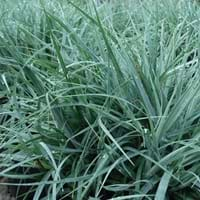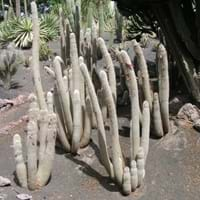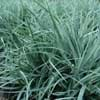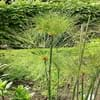Life Span
Perennial
Perennial
Type
Sedge or Rush
Cactus
Origin
Northeastern United States, Western Europe
Central America, South America, Brazil
Types
Not available
Not Available
Habitat
Grassland, moorlands
Desert, Temperate Regions
USDA Hardiness Zone
4-8
12-15
Sunset Zone
3a, 3b, 4, 5, 6, 7, 8, 9, 14, 15, 16, 17, 18, 19, 20, 21, 22, 23, 24
12, 13, 21, 22, 23, 24
Habit
Clump-Forming
Upright/Erect
Flower Color
Yellow green
Red, Orange, Salmon
Flower Color Modifier
Bicolor
Not Available
Fruit Color
Light brown
Not Available
Leaf Color in Spring
Blue Green, Gray Green, Gray
Not Available
Leaf Color in Summer
Blue Green, Gray Green, Gray
Not Available
Leaf Color in Fall
Blue Green, Gray Green, Gray
Not Available
Leaf Color in Winter
Not Available
Not Available
Leaf Shape
Long hair-like leaves
Succulent
Plant Season
Spring, Summer, Fall
Spring, Summer, Fall, Winter
Sunlight
Partial Sun, Partial shade
Full Sun
Growth Rate
Medium
Not Available
Type of Soil
Clay, Loam, Sand
Loam, Sand
The pH of Soil
Acidic, Neutral, Alkaline
Acidic, Neutral, Alkaline
Soil Drainage
Average
Well drained
Bloom Time
Early Summer
Spring, Summer
Tolerances
Drought
Drought
Where to Plant?
Ground
Container, Ground, Pot
How to Plant?
Divison
Seedlings, Stem Cutting
Plant Maintenance
Low
Medium
Watering Requirements
Average Water Needs
Reduce watering in winter
In Summer
Lots of watering
Lots of watering
In Spring
Moderate
Moderate
In Winter
Average Water
Average Water
Soil pH
Acidic, Neutral, Alkaline
Acidic, Neutral, Alkaline
Soil Type
Clay, Loam, Sand
Loam, Sand
Soil Drainage Capacity
Average
Well drained
Sun Exposure
Partial Sun, Partial shade
Full Sun
Pruning
Remove damaged leaves, Remove dead branches, Remove dead leaves
No pruning needed, Remove damaged leaves, Remove dead branches, Remove dead leaves
Fertilizers
All-Purpose Liquid Fertilizer
Fertilize the soil before planting, slow-release fertilizers
Pests and Diseases
Aphids, Brown Spots, Galls
Bacterial Stem Rot, fungus, Mealybugs, Spider mites
Plant Tolerance
Drought
Drought
Flowers
Insignificant
Yes
Flower Petal Number
Single
Single
Foliage Texture
Fine
Bold
Foliage Sheen
Matte
Not Available
Attracts
Wildlife
Hummingbirds
Allergy
Not Available
Not Available
Aesthetic Uses
Cottage Garden, Ground Cover, Landscape Designing
Landscape Designing, Showy Purposes, Wild gardens
Beauty Benefits
Not Available
Not Available
Environmental Uses
Air purification
Air purification
Medicinal Uses
Not Available
No Medicinal Use
Part of Plant Used
Leaves
Whole plant
Other Uses
Used for Landscaping
Florist trade and landscaping, Used as Ornamental plant
Used As Indoor Plant
No
No
Used As Outdoor Plant
Yes
Yes
Garden Design
Edging, Groundcover, Mixed Border
Container, Houseplant, Rock Garden, Wall
Botanical Name
CAREX flacca
Cleistocactus strausii
Common Name
blue sedge, gray carex, glaucous sedge, carnation-grass
silver torch or wooly torch
In Hindi
ब्लू सेज
Cleistocactus strausii
In German
Blau-Segge
Cleistocactus strausii
In French
Bleu carex
Cleistocactus strausii
In Spanish
azul de la juncia
Cleistocactus strausii
In Greek
μπλε σπαθόχορτο
cleistocactus strausii
In Portuguese
azul Sedge
Cleistocactus strausii
In Polish
niebieski turzyca
cleistocastus strausii
In Latin
blue Sedge
Cleistocactus strausii
Phylum
Magnoliophyta
Magnoliophyta
Class
Liliopsida
Magnoliopsida
Order
Cyperales
Caryophyllales
Family
Cyperaceae
Cactaceae
Genus
Carex
Cleistocactus
Clade
Angiosperms, Commelinids, Monocots
Angiosperms, Core eudicots, Eudicots
Tribe
Not Available
Trichocereeae
Subfamily
Not Available
Cactoideae
Number of Species
Not Available
Season and Care of Blue Sedge and Cleistocactus Strausii
Season and care of Blue Sedge and Cleistocactus Strausii is important to know. While considering everything about Blue Sedge and Cleistocactus Strausii Care, growing season is an essential factor. Blue Sedge season is Spring, Summer and Fall and Cleistocactus Strausii season is Spring, Summer and Fall. The type of soil for Blue Sedge is Clay, Loam, Sand and for Cleistocactus Strausii is Loam, Sand while the PH of soil for Blue Sedge is Acidic, Neutral, Alkaline and for Cleistocactus Strausii is Acidic, Neutral, Alkaline.
Blue Sedge and Cleistocactus Strausii Physical Information
Blue Sedge and Cleistocactus Strausii physical information is very important for comparison. Blue Sedge height is 15.20 cm and width 15.20 cm whereas Cleistocactus Strausii height is 60.00 cm and width 30.00 cm. The color specification of Blue Sedge and Cleistocactus Strausii are as follows:
Blue Sedge flower color: Yellow green
Blue Sedge leaf color: Blue Green, Gray Green and Gray
Cleistocactus Strausii flower color: Red, Orange and Salmon
- Cleistocactus Strausii leaf color: Not Available
Care of Blue Sedge and Cleistocactus Strausii
Care of Blue Sedge and Cleistocactus Strausii include pruning, fertilizers, watering etc. Blue Sedge pruning is done Remove damaged leaves, Remove dead branches and Remove dead leaves and Cleistocactus Strausii pruning is done No pruning needed, Remove damaged leaves, Remove dead branches and Remove dead leaves. In summer Blue Sedge needs Lots of watering and in winter, it needs Average Water. Whereas, in summer Cleistocactus Strausii needs Lots of watering and in winter, it needs Average Water.





